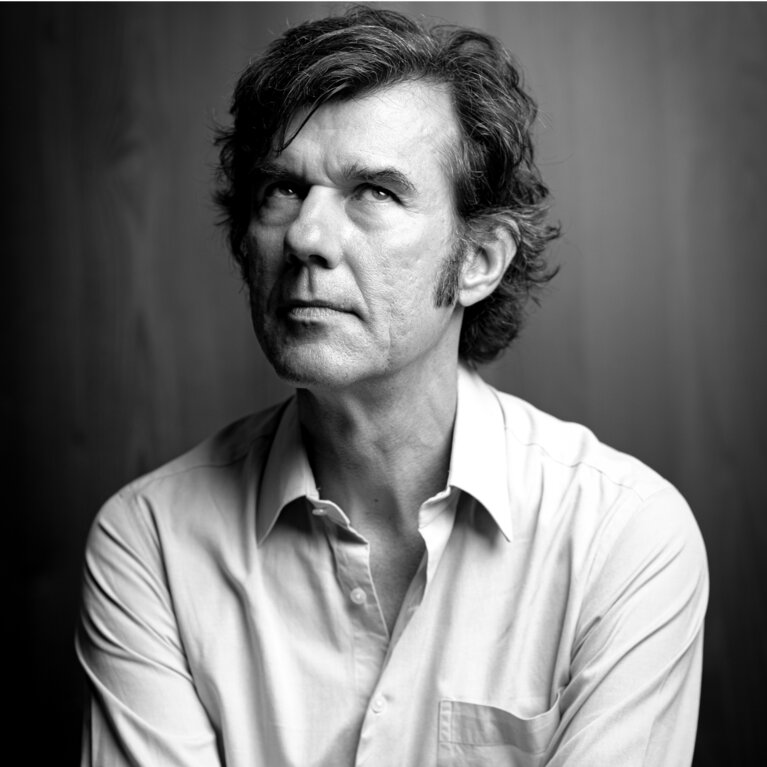

He is one of the most iconic graphic designers in the world. His covers for Lou Reed, Talking Heads, David Byrne and the Rolling Stones have made design history. Stefan Sagmeister has worked for Levi’s and the Guggenheim Museum and he is the creator of internationally acclaimed projects such as »Happy« or »Beauty«. He bends, moves or ignores the boundaries of graphic design and presents himself as a creative provocateur, speaker, entertainer, researcher or philosopher.
Your work touches or transcends the boundaries to art time and again. What is the point of these boundaries anyway? And where between design and art do you position your work yourself?
There is a wonderful Adorno quote in which he states that there is no such thing as pure functionality nor pure absence of functionality: »Freedom of purpose and purposefulness can never exist separated from each other.« This means that all design projects and all works of art are on the same level, with function playing a bigger role in some than in others. The same is true for all of our work in the studio.
Which of your works do you think have crossed the line to art?
In the past few years, I’ve been increasingly attracted to works with less functionality. I have a surprising number of friends who believe that the world is about to end, that we are living in the worst time in human history. Yet the facts show the exact opposite. We are doing better than ever before. I am currently reviewing developments of mankind over a long period of time, going back to 200 year old data. What I see is that practically everything has taken a favorable development. These positive trends attract my attention, and I try to visualise them, hoping they will remind people that the actual state of our world is completely misrepresented by all the bad news surrounding us. For this purpose, I merge 200 year old images with contemporary compositions, which also include data visualisations.




»Beauty« is often being dismissed as »superficial,« even banal. Functionality has superseded beauty in design. Where, in your opinion, lies the special power of beauty?
In the 19th century, »the beautiful« was perceived as a value in its own right – on the same level as »the good«. Then, during the First World War, when so-called civilised nations slaughtered each other in unspeakable ways, numerous artists, especially Max Ernst and Marcel Duchamp, lost faith in the value of beauty. Hence Duchamp’s ›Fountain‹ as a negation of beauty. I can well comprehend this line of thinking historically, but today, through a hundred years of repetition, it is literally outdated and boring. We ourselves have come to realise by experience in the studio that whenever we take the form very seriously and put a lot of love into the beauty, the work result turns out much better. We have since found this to be true with many other examples as well: All those functional 1970s apartment blocks that had to be torn down again in the 1990s because no one wanted to live in them, would have worked much better if beauty had been part of the goal in the planning process. The special power of beauty makes me behave better in a beautiful environment. And it makes me feel better, too. Every morning I go for a run on the New York High Line, and I’ve never seen even a single piece of paper tossed on the ground there. 50 metres from the High Line, in the adjacent Meatpacking District, there is plenty of trash in the gutters. But not on the High Line. The attention to detail in the High Line design changes the behavior of its visitors.

Mick Jagger reportedly once said to you, »You are the floaty one.« Would you say this is an accurate characterisation of yourself?
Haha, no, not really. Mr. Jagger said that with reference to our cover for Lou Reed. It featured a light-coloured portrait of Lou in a deep dark blue cover, which created a floating effect. I rarely float myself but rather tend to keep both feet on the ground.
The conversation with Stefan Sagmeister was first published in the mcbw MAG as part of mcbw 2022.
